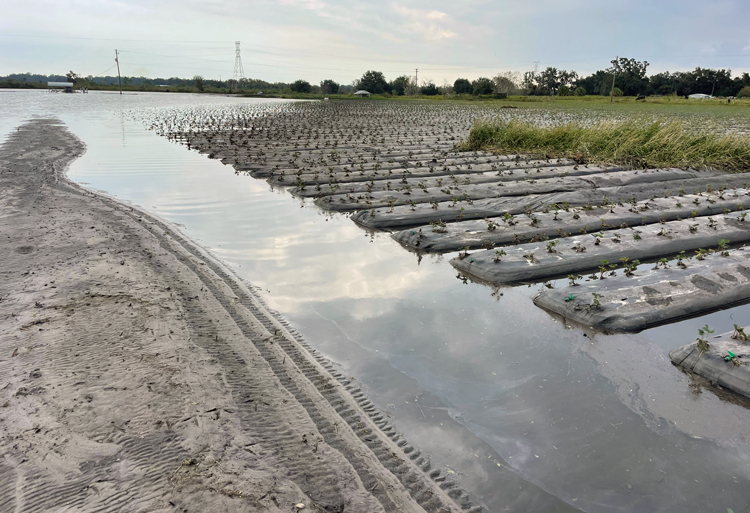MIAMI — Working people in the southeastern part of the United States have been hit by two devastating hurricanes in less than two weeks. The first, Hurricane Helene, cut a swath of destruction from landfall near Tampa Bay into the Carolinas, Tennessee and Kentucky. Over 250 people lost their lives, at least half in North Carolina. Some areas are still without power.
Hurricane Milton followed on Oct. 9, hitting just south of Tampa, laying waste to this densely populated and economically developed area of Florida. Following along Interstate Highway 4, it crossed the state, spawning deadly tornados, until it moved into the Atlantic Ocean just south of Jacksonville. The two storms caused billions of dollars of losses to farmers and other producers in the region.
Hurricane Milton caused at least $160 billion in damage, according to a preliminary estimate from AccuWeather. Total losses could grow to $180 billion, making it one of the most damaging storms in Florida history.
Milton’s destructive winds led to millions of homes and businesses losing power. As of Oct. 11, over 2.4 million customers were without power.
Karl Butts has farmed in an area just east of Tampa for decades. He was affected by Hurricane Helene, but he and his neighbors faced catastrophic losses during Milton.
“We started preparing for the storm three days before it hit,” Butts told the Militant. “We picked as much fruit as possible and had quite a bit of eggplant in the cooler when the power went down Wednesday as Milton moved through.
“When winds and rain subsided Thursday night, what it left behind was unprecedented flooding, wind damage and a flattened landscape strewn with debris and wide swaths of power outages.”
The lifelong vegetable farmer described the disaster facing producers on the land. “The main farm damage was caused by water saturating the fields, weakening crop roots and then high winds flattening them.”
Butts described the intensive labor he and other fruit and vegetable farmers put in trying to save the plants that can still stand. “We had to reset the stakes, putting on a new string and initiate whatever was necessary to allow the plants to recover and resume growth.”
Butts described how modern agriculture can’t be done by just single farm families operating in isolation. “My fate is intertwined with that of a neighboring farmer, who is Chinese, and a small wholesale produce vender who buys what I grow. They, in turn, are dependent on the local grocery store, produce venders and restaurants who they sell to. All of them were shut down by the storm and its aftereffects.”
Farmers throughout the area had to take emergency measures to salvage as much of their crops as possible, including recently set strawberry plants, as well as fields that had been prepared for fall planting.
Fields completely flooded
“It’s safe to say all 10,000 acres of strawberry fields were adversely impacted, a good portion being unrecoverable,” Butts said. “Many fields were completely flooded and those saturated for long periods collapsed the beds and were lost. Recently planted fields exposed to prolonged saturated conditions favor root rot outbreaks. High winds blew recently set plants right out of their holes.
“Coolers where produce and boxes of strawberry plants for the fruiting fields lost power, resulting in losses.
“Strawberries and vegetables are labor- and capital-intensive crops with production costs in the thousands, if not tens of thousands, of dollars per acre.”
At the same time, Butts described how the producers came together to support each other and work cooperatively to begin recovering from the effects of the storm. “Acts of human solidarity were on display everywhere. Being awakened to how vulnerable we all are in the face of such powerful natural phenomena, people instinctively begin not to just look out for themselves but also for each other,” he said.
“Passersby frequently stopped to ask if everyone is OK and if you need anything,” he said. “Our neighbor who had a generator ran a hose to another neighbor’s home so they had water.
“While farmers are absorbed with salvaging their particular situations, they do take time to call on other farmers they’ve known over the years to see how they are doing. We learn from their experiences what works and what doesn’t,” he said.
While these producers — like tens of thousands of others across the Southeast — got little help from government officials, their own collaboration shows the power of the solidarity of working people.


